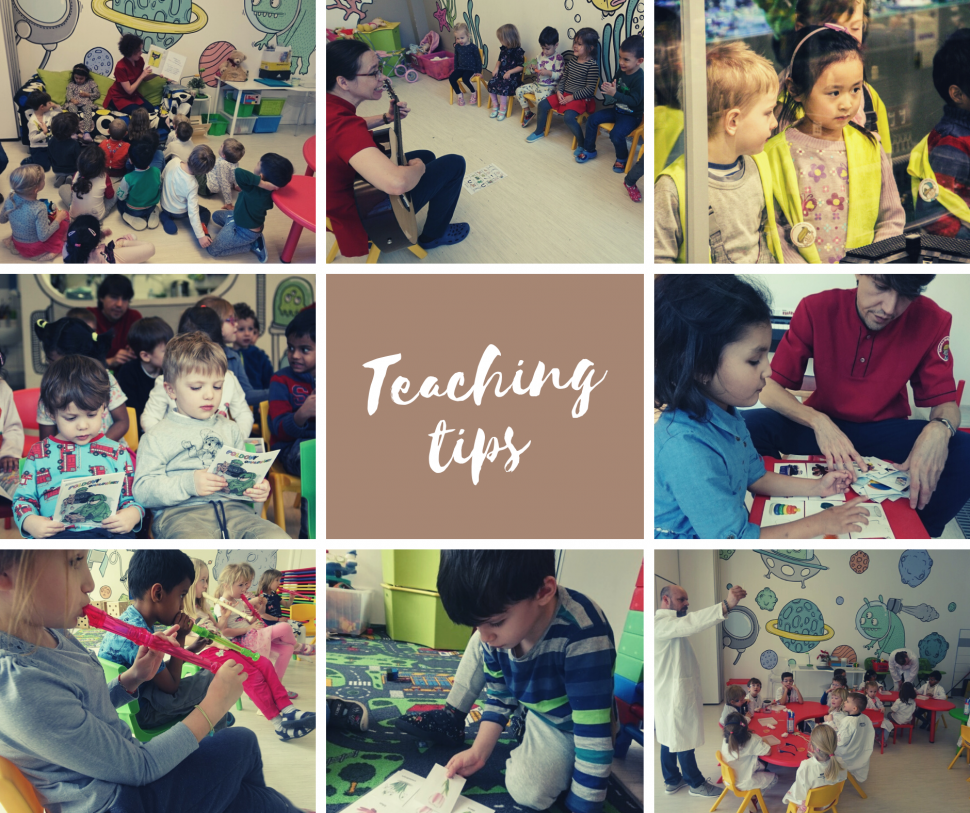6 teaching tips

Teaching preschoolers is a very rewarding profession and, I am sure that many of my colleagues will agree, there is rarely a dull moment in the day of an early years teacher. As preschool is often the first step on a child’s educational journey, the skills that they learn there don’t only prepare them for reception and year one, but also provide them with lifelong skills and a love of learning.
One of my best teaching tips is leading by example: behaving in a way that you would like the children to behave. Let me give you an example: the class is noisy (not an unusual occurrence in preschool) and you can’t get their attention. It would be fair for the thought “okay, now I need to shout to get the children’s attention” to cross your mind. This may work initially – shouting that the children are too loud – but as adults, we see how bizarre this behaviour is!
Instead of shouting, try to get the children’s attention in other ways like starting a song – quietly – or a fingerplay that they really like. I often use “show me your fingers” in circle time and this can be used throughout the day once children know what to expect. As the children like this game, they are more likely to focus on that and you, as a teacher, can then control the noise of the room. Having little fingerplays or quiet songs can be more effective than “one two three, eyes on me” as you’ve not had to raise your voice at all, showing the children the desired behaviour and getting your required response.
My next tip relates to keeping children’s attention once you have it, and it may surprise you. Don’t be afraid to throw out your lesson or your plan if the children can’t settle, aren’t interested, or are easily distracted. I’ve planned lessons before that one group have loved and, when I try with another group, they are just not interested. That’s fine! What isn’t fine is making the children sit and be bored by a lesson they don’t have any interest in. This sets them up to fiddling with their slippers, talking to their friends, or making their own fun as children invariably do! Having a few tricks up your sleeve like the ones below can be lesson savers for a bored class:
- Getting up and moving with silly and active songs. Last week in class, the children were so excited to share things with me that they couldn’t control their shouting and talking over each other. So, what did we do? We learnt the “ugly buzzards” song to get out some of their excitement and silliness. After this short interlude, the children were calmer and were able to continue with the lesson.
- Ending a lesson and coming back to it another day. Sometimes children aren’t in the mood to hold a pencil and trace their names. That’s fine! You may have planned such a literacy activity and it falls on a day that a child’s grandparents are coming to visit. They are so excited, and their excitement rubs off on their classmates. Here, my best tip is to scrap the literacy lesson and go have a P.E. lesson. It can still be literacy related but, rather than using their fine motor skills, the children can practice using their gross motor skills instead.
- Have something up your sleeve. It’s a great idea to have an array of games, crafts, songs, and movement activities up your sleeve that you can draw upon at a moment’s notice. This could be part of your lesson plans and be more of an extension activity, or a song you make up on the spot!
The last tip I’d like to share, as I fear this is already too long, is setting up rules and boundaries and sticking to them. Be unwavering in what the rules are. If you don’t want children shouting out all at the same time during circle time then enforce the rule that they need to raise their hand, or hold the taking toy, or whichever method you use. Children need and crave boundaries and rules, and even just a few small ones can really help them understand rules that they will need throughout their lives.
In the past, I have implemented sharing time at the start of circle time. This allowed each child, should they want to, to share a story about what they did at the weekend, what they saw on the way to school, or an event they’re excited about. The only rule was that everyone in the circle needed to use their “listening ears” if they also wanted their friends to listen to them. Of course, it took a few days to reinforce, but the children quickly got to realise that their words and experiences are important and valued, while also understanding that other’s experiences are valued too. They even began to ask each other questions about their stories which helped their social skills, listening skills, and language skills.
Our job as teachers is a very important one as we have the potential to shape a child’s feelings about school and learning. I hope that these tips can help you as we guide our small friends through their educational journey.


